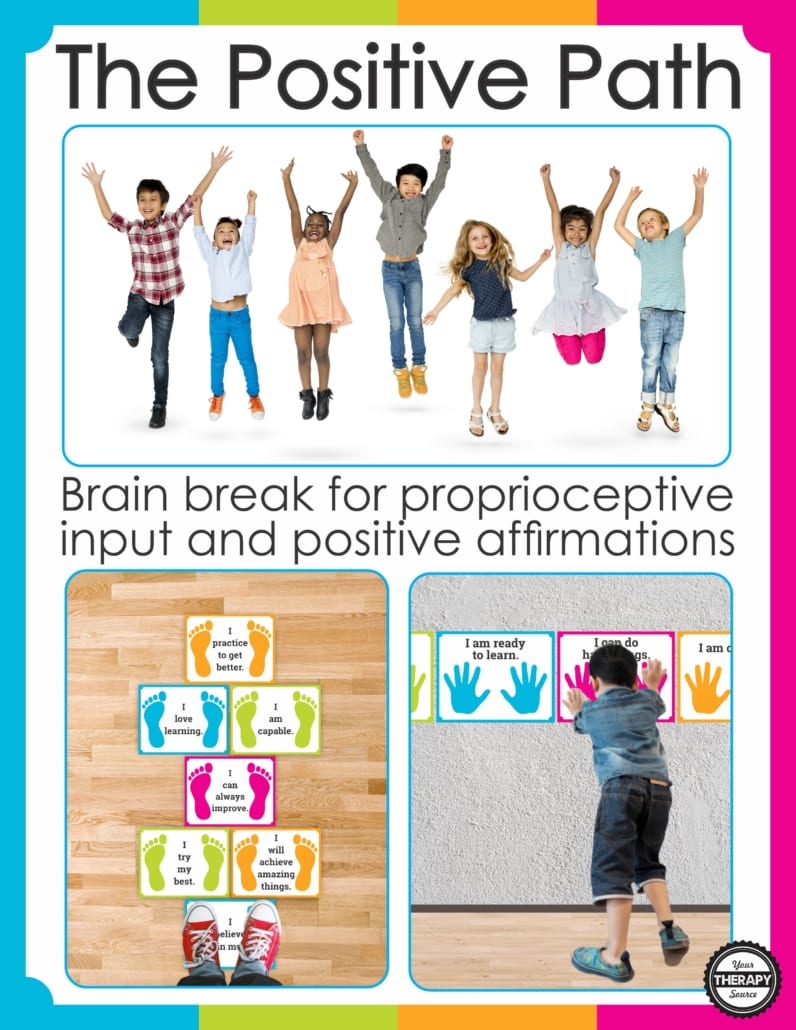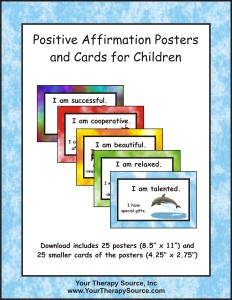Specific Feedback – Use Positive Reframing to Help Children Learn

Are you up for the challenge of the day to provide specific feedback? Can you go through an entire day of providing therapy or teaching only having a positive tone instead of a negative tone? How about as a parent?
Many times we often quickly respond to children with ‘no” before we even consider the question. Or we snap and bark orders about “Do not do this” or “stop it, just stop it!” The amount of times I have done this as a parent of six children is endless. It is very hard to stop and think about your words before you say them. We are all a work in progress and this is something that I am definitely improving upon but I am not even close to being perfect.
Specific Feedback Challenge of the Day
Try spending all day avoiding the words “no”, “stop” or the phrase “don’t do that!” Try replacing those phrases with positive alternatives always starting off by saying “do this” or “yes we can!”
Of course there are times where we must yell NO or STOP for the safety of children, but there are many other times where we can stop ourselves and think about our responses.
When we use positive, specific, immediate feedback, children are more likely to change their actions or at least understand what you want them to do instead of stopping what they are currently doing.
Suggestions of How to Use Positive Reframing
Here are some suggestions to replace a negative tone when providing specific feedback to children (or really anyone):
Instead of saying “Do not walk on your toes.” Try “Walk with your heels down.”
Instead of saying “Do not start the Letter A at the bottom.” Try “Start the letter A at the top.”
Instead of saying “Do not get distracted.” Try “Let’s finish this first then we can do that.”
Instead of saying “No, we can’t do that.” Try “Yes, we can do that but we need to do this activity first.” (Visual schedules can help with this too!)
Instead of saying “Stop tapping your pencil on the desk.” Try “Would you like a small fidget to hold on to for awhile?”
Try this challenge just for today to start. Then each day work on it a little bit more. This will not be a change overnight but I think the rewards will be great!
Encourage Children to Do the Same
Children can also benefits from positive reframing and specific feedback for themselves. Teach children about positive self talk. Self talk is a mental strategy using self addressed cues (short phrases or a few words) to trigger appropriate responses by focusing attention on the skill or behavior to help improve performance. Researchers indicate that self talk even improves sport performance. It can be more effective in certain situations. You can read more here.
Resources to Support a Positive Mindset

Combine positive affirmations for kids and proprioceptive input with The Positive Path. Children can jump along the path or do wall push-ups while they read words of encouragement. Students can benefit from proprioceptive input to help get their bodies ready to learn.
Using the power of positive thinking with daily affirmations and physical activity can help students get their brain and bodies ready to tackle the school day. FIND OUT MORE.

Positive Affirmation Posters and Cards for Children: This is an electronic book of 25 positive affirmation posters (8.5″ x 11″) and smaller cards of the posters (4.25″ x 2.75″). Empower children to realize all of their talents. All too often, children with special needs are told what they are unable to do, how about teach them what they can do! Positive affirmations help children to believe in themselves. The posters include simple text, animal pictures that complement the text and colorful backgrounds. Hang them up around the house, class or therapy room and provide the child with the small cards to carry around to reinforce the concept. FIND OUT MORE.




Comments are closed.